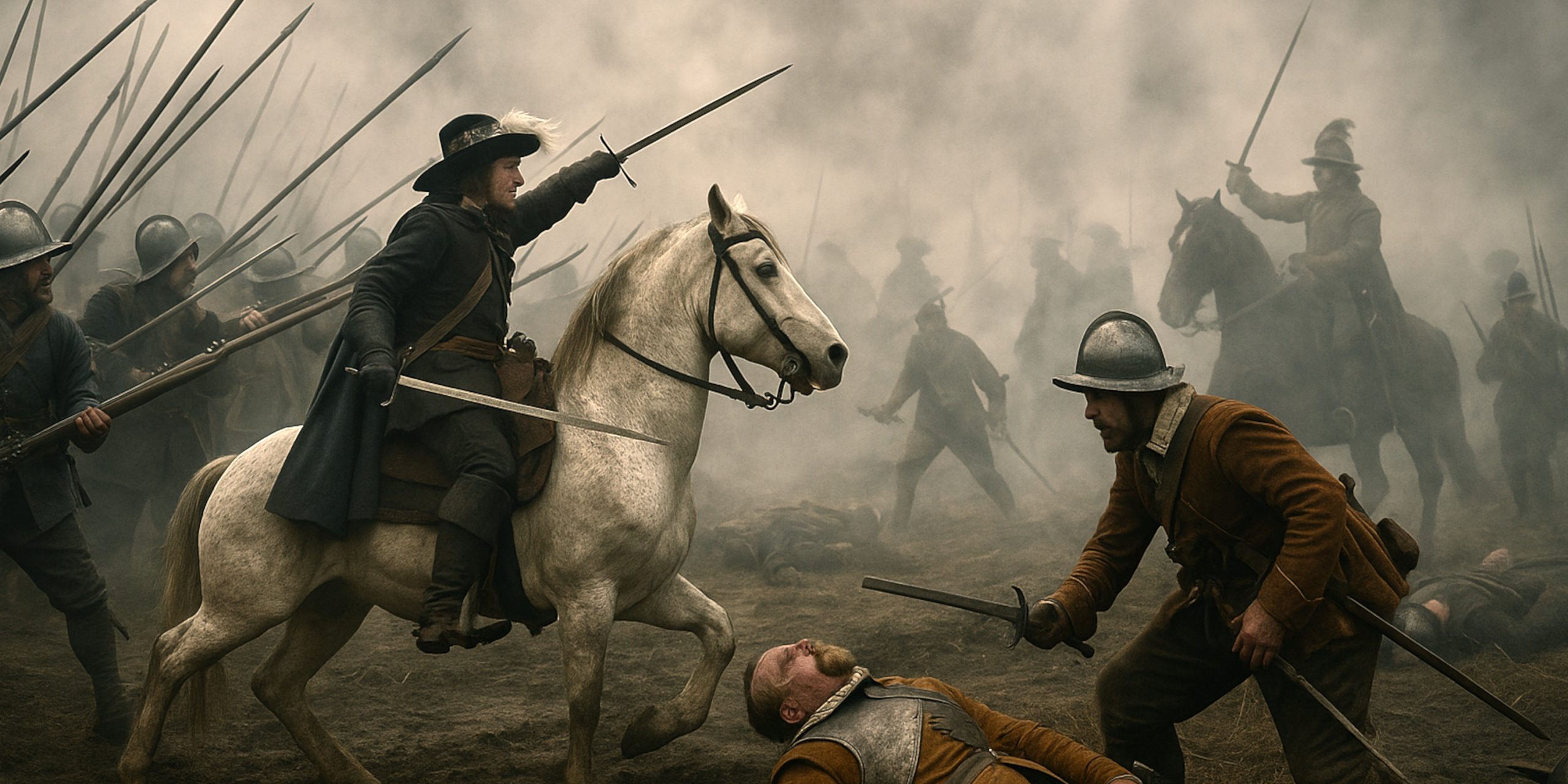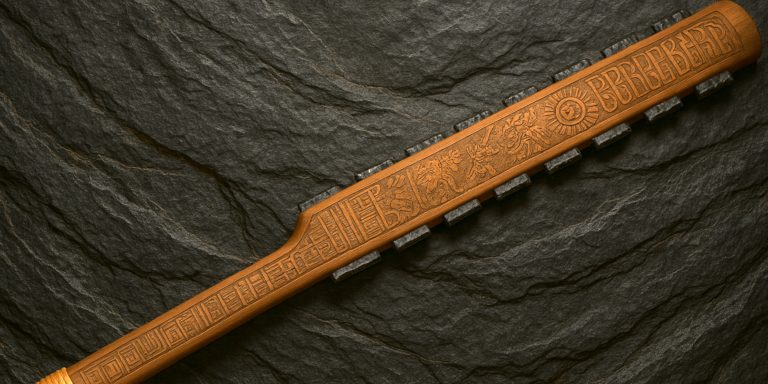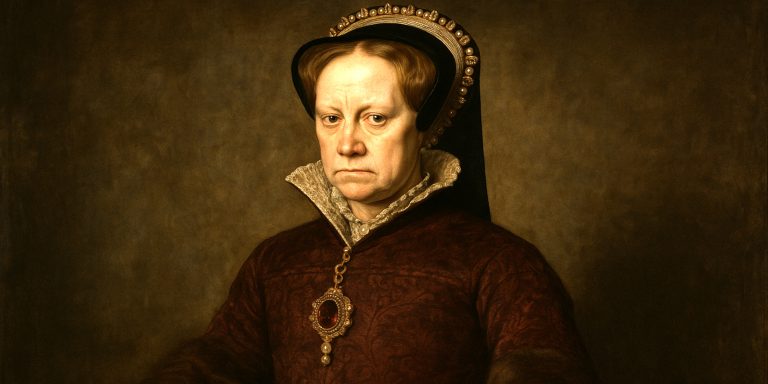
Fought in the fog and smoke of Saxony, where kings died and Europe trembled.
The Battle of Lützen, fought on 16 November 1632, stands as one of the bloodiest and most consequential engagements of the Thirty Years’ War. Pitting the Swedish army under King Gustavus Adolphus against the Imperial forces of Albrecht von Wallenstein, the battle ended in a costly Swedish victory overshadowed by tragedy. Gustavus, hailed as the Lion of the North, would fall in the fighting, leaving his army victorious but rudderless.
It was a battle fought in choking fog, through broken fields, ditches, and gun smoke. Lützen became a field of glory and ruin, a moment where the future of Protestant Europe seemed both secured and imperilled in a single day.
Forces
| Side | Commander | Estimated Strength | Artillery | Cavalry |
|---|---|---|---|---|
| Swedish (Protestant Alliance) | King Gustavus Adolphus of Sweden | ~18,000 | ~60 guns | ~7,000 |
| Imperial (Catholic League) | Albrecht von Wallenstein | ~15,000 | ~24 guns | ~6,000 |
Both armies were experienced, but Wallenstein’s men were entrenched defensively, using sunken roads and fieldworks for protection. Gustavus’ force, disciplined and innovative, was built for speed and coordinated firepower.
Leaders and Troop Composition
| Army | Key Leaders | Units Present | Composition |
|---|---|---|---|
| Swedish Army | Gustavus Adolphus, Duke Bernhard of Saxe-Weimar, Lennart Torstensson | Blue, Yellow, and Green Brigades | Musketeers, pikemen, cuirassiers, dragoons, light artillery |
| Imperial Army | Albrecht von Wallenstein, Gottfried Heinrich Graf zu Pappenheim (arrived midday) | Tercios, cuirassiers, Croat light cavalry | Musketeers, pikemen, heavy cavalry, harquebusiers |
Wallenstein’s Imperial troops were veterans, but less mobile. The Swedes’ linear formations, smaller brigades, and mobile artillery gave them greater flexibility in the open field, when the fog allowed anyone to see anything, that is.
Arms and Armour
| Type | Description | Example |
|---|---|---|
| Infantry Weapons | Matchlock muskets, pikes of 16–18 feet, halberds for officers | Swedish Blue Brigade musketeers |
| Cavalry Weapons | Wheel-lock pistols, carbines, broadswords, and rapiers | Cuirassiers wielding German Reiter swords |
| Artillery | Swedish leather guns (light field pieces) and heavy cannon | 3–12 pounders used in mobile batteries |
| Armour | Half-armour for cavalry; breastplates and morions for infantry | Pappenheim’s cuirassiers in blackened steel |
| Swords of Note |
- Swedish officers: Walloon swords and Swedish cavalry sabres
- Imperial cuirassiers: Katzbalger and sideswords typical of the period
- Commanders: Gustavus’ own gilded broadsword (now lost), Pappenheim’s richly decorated rapier
The Swedish sword types reflected Gustavus’ emphasis on mobility and shock, whereas Imperial swords were heavier and made for close cavalry charges.
Battlefield and Conditions
The battlefield near Lützen was flat but riddled with ditches, enclosures, and the infamous sunken road that Wallenstein’s troops turned into a makeshift rampart. A thick morning fog delayed the engagement for hours. When the cannons finally opened fire, visibility was so poor that entire brigades vanished into the haze.
The Swedes advanced under fire, their artillery roaring at close range. The Imperial army held firm until the late arrival of Pappenheim’s cavalry turned the tide briefly, before Pappenheim himself was mortally wounded by grapeshot.
Battle Timeline
| Time | Event |
|---|---|
| Early Morning (before 9:00) | Thick fog delays the Swedish advance. Gustavus rides along the line giving orders. |
| Late Morning (around 10:00) | Fog lifts partially; Swedish artillery begins bombardment. Infantry advance under heavy musket fire. |
| Midday | Imperial counterattacks drive back Swedish wings. Pappenheim’s cavalry arrives but is fatally struck in action. |
| Afternoon (approx. 13:00–15:00) | Gustavus leads a cavalry charge on the Imperial right and is shot and killed. Swedish morale wavers but Duke Bernhard of Saxe-Weimar rallies the line. |
| Late Afternoon | Swedish counterattack reclaims the Imperial guns. Wallenstein orders withdrawal towards Leipzig. |
| Evening | Fog descends again; the field is strewn with dead. The Swedes hold the ground but mourn their fallen king. |
Contemporary Quotes
“He died like a soldier, not like a king.”
– Anonymous Imperial officer, upon hearing of Gustavus Adolphus’ death
“The fog was our shroud, and the earth beneath was soaked in the blood of the righteous.”
– Swedish officer’s letter, 1632
“No battle of our age was fought with such fury, nor any victory purchased so dearly.”
– English observer in Saxony
Archaeology
Modern archaeological work at Lützen has revealed thousands of musket balls, fragments of artillery rounds, and cavalry equipment scattered across the site. Notably:
- Lead shot concentrations show intense firefights near the Imperial trenches.
- Pike heads and sword fragments confirm close combat where Swedish brigades breached defences.
- Cavalry remains and horse gear mark the site of Gustavus’ fatal charge.
- Metal detectors uncovered fragments of ornate sword hilts, possibly officer-grade rapiers.
The battlefield’s preservation allows a rare glimpse into 17th-century warfare, from the geometry of formations to the violence of impact.
Aftermath and Legacy
The Swedes technically won the Battle of Lützen, driving Wallenstein from the field. Yet the death of Gustavus Adolphus robbed Protestant Europe of its most capable commander. His innovations in mobile warfare and combined arms tactics would influence military thinking for centuries, though one suspects he might have preferred to live long enough to patent them.
Wallenstein’s army retreated in good order, battered but not broken. Within months, the war continued as bitterly as before. The hero’s death became a Protestant rallying cry across Europe, immortalised in sermons, broadsheets, and battlefield memorials.
Legacy in Historical Memory
- Tactical Influence: Gustavus’ methods became textbook for modern armies, especially his flexible use of infantry and artillery.
- Cultural Memory: Monuments were raised at Lützen, and pilgrims still visit the King’s Stone marking the site of his fall.
- Historical Irony: The Swedish Empire reached its peak under his successors, but without his guiding hand, its expansion was far bloodier and less inspired.
The Seaven Swords Takeaway
The Battle of Lützen was both triumph and tragedy. Gustavus Adolphus’ death turned victory into mourning and transformed him into a near-mythic figure, the Protestant Alexander. The fog that morning did not merely obscure the field; it symbolised the war itself, where glory and futility marched hand in hand.
If one lesson endures from Lützen, it is this: even a genius with a musket line cannot see through fog, political or otherwise.
Watch the documentary:



